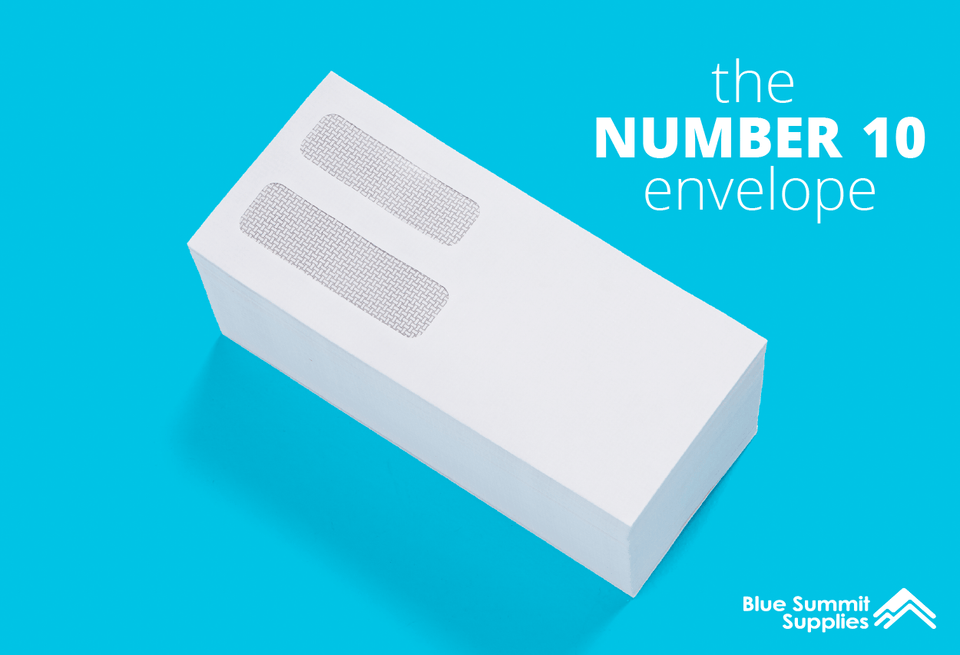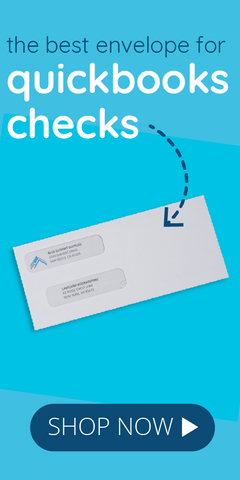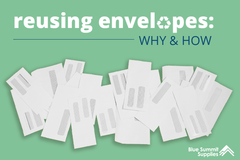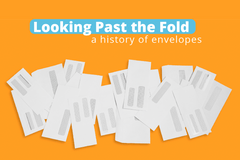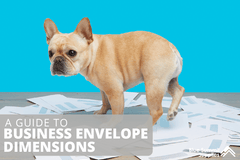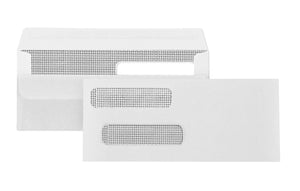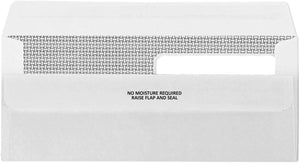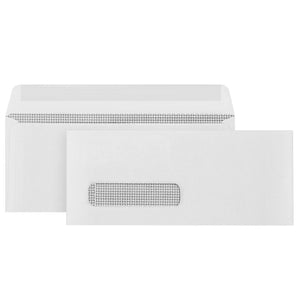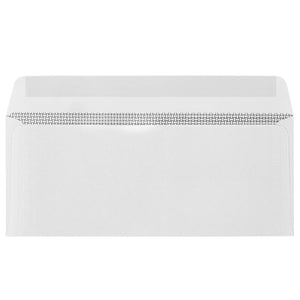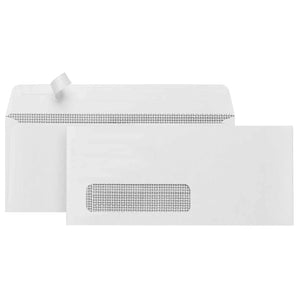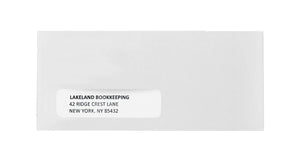Envelopes are simple, right?
Except, surprisingly, they’re not.
In theory, it seems like buying envelopes would be an easy task. But when you’re responsible for ordering office supplies for your superiors, your organization, or for your own small business, deciphering the differences between number 8, 9 or 10 envelopes is not always so intuitive.
Does the “10” in no. 10 envelope stand for 10 inches? If there’s a number 10 envelope, is there a number 20? The answers here are no and no – but we definitely understand the confusion!
In this post, we’re answering the most frequently asked questions about the no. 10 envelope size to make selecting the right envelope for your needs a breeze.
What are the Number 10 Envelope Dimensions?
We often get asked for the measurements of our most popular business envelope, the number ten envelope. Envelope sizes are always listed by the shortest dimension first, which for standard business envelopes is the height. The second measurement always equals the longer edge of the envelope, or the width.
Using this format, the standard number 10 envelope size is generally accepted as 4-1/8 inches tall x 9-1/2 inches wide. Those are the dimensions of the #10 envelopes that we sell here at Blue Summit Supplies. While there is no law dictating that number 10 envelopes be this precise size, most envelope manufacturers use these standard dimensions as a general rule of thumb.
For our math-illiterate friends (we know you’re out there, and it’s okay), a sheet of standard white letter paper folded in thirds trifold-style (sometimes more affectionately known as “hot dog style”) fits easily inside a number 10 envelope.
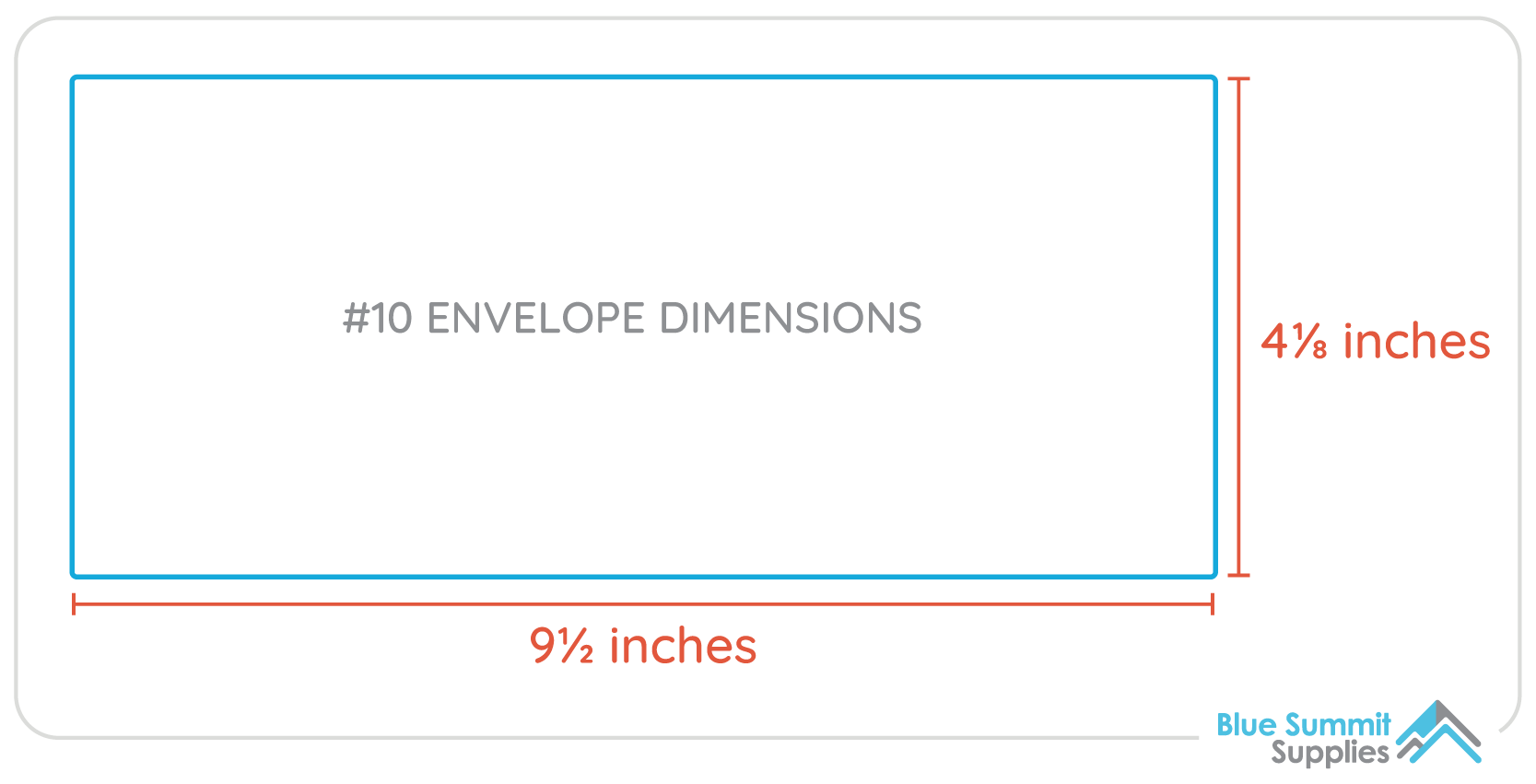
What is a No. 10 Envelope used for?
In the business world, the #10 envelope is best for mail printed on standard 8 ½ x 11" sheets of letter paper – the size of white copy paper. Things like monthly statements, bills, invoices, and other business correspondence are often mailed in no. 10 envelopes.
And transactional mail – mail requiring an action from the receiver – is usually sent in number 10 envelopes, since a return mail envelope fits inside. Return business mail envelopes are typically smaller #8 or #9 envelopes, which are sent inside the larger #10 envelope.

Envelopes are made with and without security lining. A security envelope is one with a printed pattern on the lining of the envelope so that contents inside can’t be seen when held up to a light. An example of security envelopes is a tax envelope.
Why would you use number 10 envelopes with windows?
Just like most business envelopes, #10 envelopes are available both with and without windows. #10 envelopes with single windows are typically used to display the recipient’s mailing address through the window opening. The sender can then either inscribe a handwritten return address, use a return address label, or have their envelopes pre-printed with their return address.
Alternately, double window #10 envelopes are designed so that both the recipient and return addresses can be seen through the windows. Most often, these mailing addresses are pre-printed on the business correspondence inside, then folded so that they conveniently show through the envelope windows – with no additional labels or handwriting addresses required.
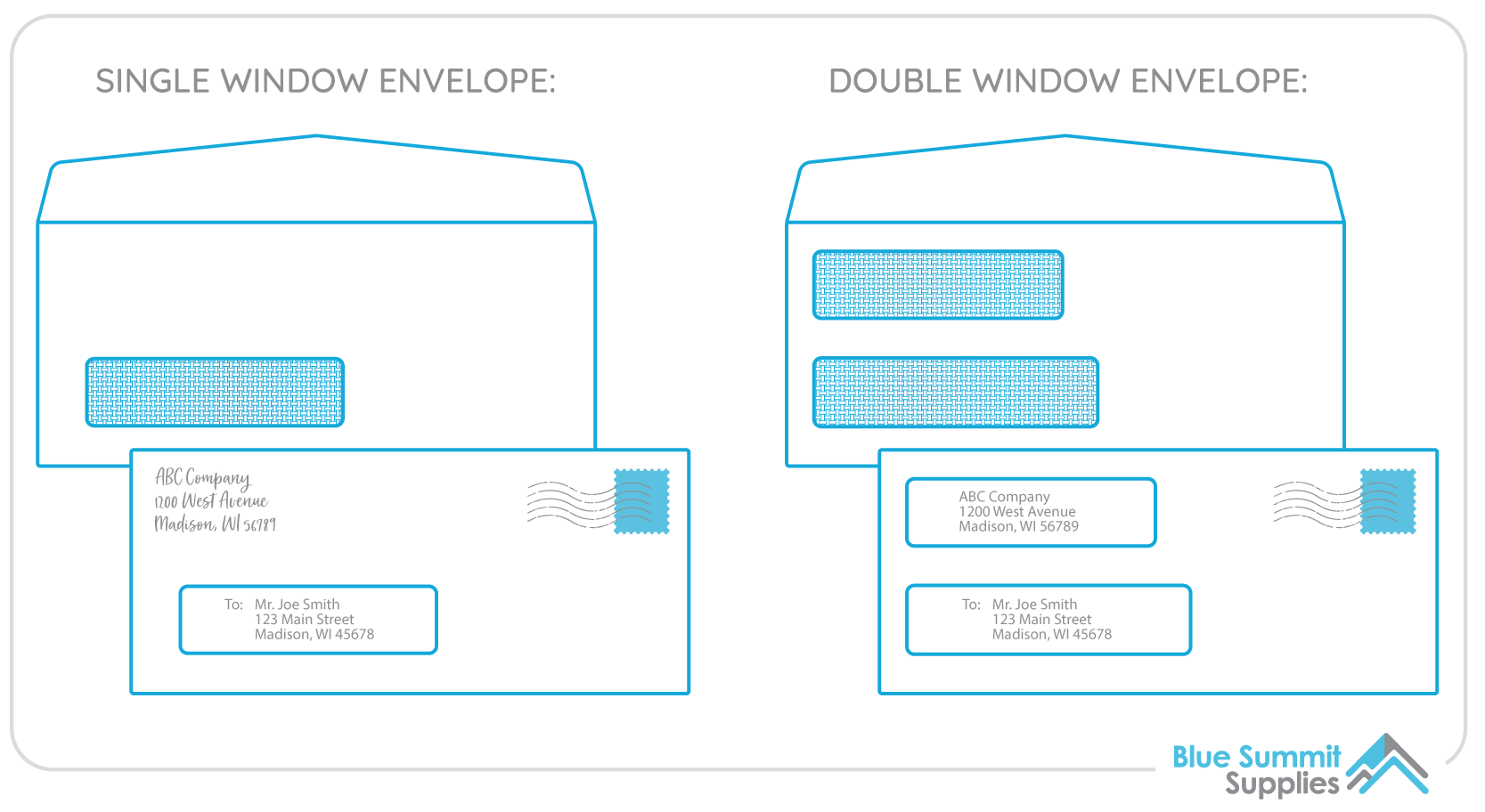
How do I align the “to” and “from” addresses in #10 envelopes?
We’ve created a few free templates to help you print letters using the standard window options for the number 10 envelope size. After all, fit matters. Just ask Larry – she knows firsthand that using the right size envelope is important when it comes to both professionalism and privacy.
- Document Template for a #10 Single Window Envelope: Use this template to create a letter document that will show the recipient address through the single window on the front of the envelope.
- Document Template for a #10 Double Window Envelope: Use this template to create a letter document that will show the return and recipient addresses through the windows on the front of the envelope.
(Looking to print directly on an envelope? Microsoft Office offers detailed instructions for how to do this in Word right here.)
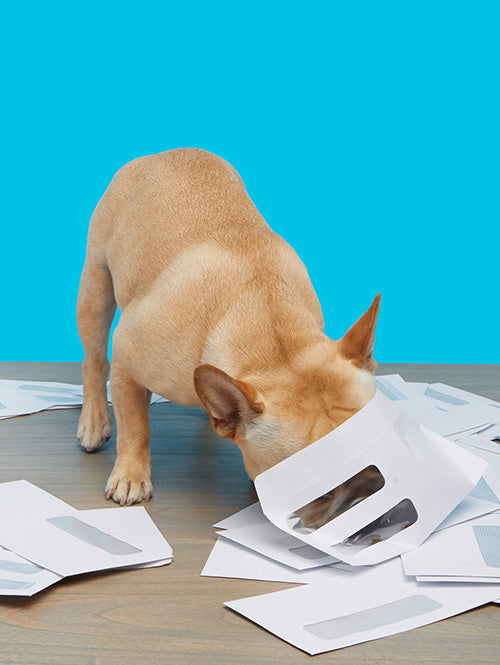
Can you use #10 envelopes to send QuickBooks checks and invoices?
We know how frustrating it can be to find the best size envelopes for checks or invoices printed with QuickBooks so that your address information lines up correctly in the windows. While #10 windowed envelopes do work great for QuickBooks invoices, we don’t recommend using them for QuickBooks checks. If a #10 envelope is used to send QuickBooks checks, it is likely that the address window will reveal the check amount through the bottom window. Instead of using a #10 envelope for QuickBooks checks, we recommend using a #8 envelope – particularly one with windows that were designed specifically to align with QuickBooks checks. Click here for a few options!
What about different types of envelope seals?
As with most envelopes, the key differences (other than size) often come down to the types of seals. It's standard to find both windowless and windowed envelopes with each of the three most standard kinds of envelope seals: gummed, self-seal, and flip and seal. We have a more in-depth piece about envelope seals here, or you can reference the handy breakdown below.
Gummed Seal Envelope:
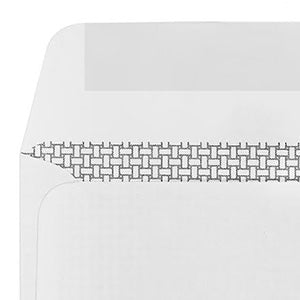
- Gummed flap envelopes are the most traditional and widely used type of envelope seal. They are also the most cost-effective.
- “Gummed” means that the envelope flap comes with a strip of water soluble gum (glue) on the inside of the flap that must be moistened in order to seal the envelope, typically by either licking or using an envelope moistener.
- Gummed flap envelopes are the only kind of envelope that can be used in large bulk mailing machines. These machines have a wetting device inside which moistens the glue.
- Gummed seals are the strongest type of envelope seal. Once moistened and pressed closed, the gum material actually permeates the paper to create a permanent bond between the flap and the envelope paper.
Self-Seal Envelope:
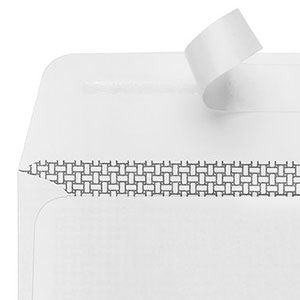
- Self-seal envelopes, also known as “peel and seal” envelopes, are a popular and convenient alternative to traditional gummed seal because they do not require licking or moistening in order to close the envelope.
- Self-seal envelopes feature a strip of adhesive on the flap, which is covered by a removable strip of tape. The tape can be easily peeled away to reveal the adhesive on the flap, which can be pressed down onto the envelope to close.
Flip and Seal Envelope:
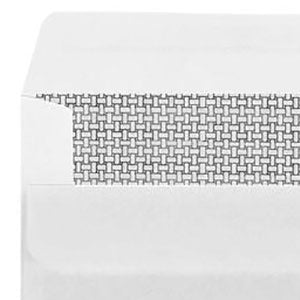
- Flip and seal envelopes are another alternative to gummed envelopes, as they are quick to use and do not require licking or moistening in order to seal the envelopes.
- Flip and seal envelopes feature two strips of adhesive: along the flap, and along the top back edge of the envelope. This top back edge comes folded down so that the sticky adhesive is not exposed.
- To seal a flip and seal envelope, simply insert your mail, raise the folded flap, and seal with the envelope flap. The two strips of adhesive are then bonded together to create a firm seal, ready for mailing.
- Flip and seal envelopes also feature perforation along the top edge of the envelope, making it quick and easy for recipients to pull open their mail without a letter opener or messy tearing.
Doing Our Part to Make the #10 Envelope Size Easy to Understand
Envelopes sound so simple and boring on the surface – but we know it’s not always so easy. Business mail needs can be complex; mailings range from simple letters to multi-page invoices to confidential billings. Therefore, you need envelopes on hand to fit those specific needs and measurements – and we’d like to help make that process as easy as possible.
As always, our Chief Happiness Officer Larry is here to answer any additional questions you might have about number 10 envelopes (or any other size). Feel free to leave her a comment below or send her an email. She or one of her Happiness Agents will get on the case ASAP!
 For more informative articles about office supplies, subscribe to our email newsletter!
For more informative articles about office supplies, subscribe to our email newsletter!
Never fear, you won't begin receiving daily sales emails that belong in a spam folder. Instead, we promise a fun weekly roundup of our latest blog posts and great finds from across the web. And if you lose interest, it's always easy to unsubscribe with a single click.

